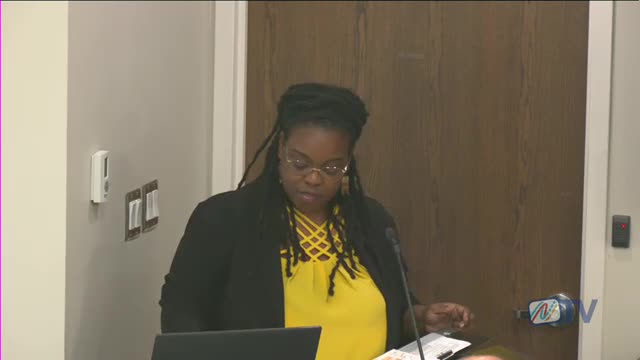City moves to eliminate parking minimums for sustainable development
October 02, 2024 | Newport News, Lee Hall County, Virginia
This article was created by AI summarizing key points discussed. AI makes mistakes, so for full details and context, please refer to the video of the full meeting. Please report any errors so we can fix them. Report an error »

In a recent government meeting, city officials discussed proposed amendments to eliminate minimum parking requirements, a move aimed at fostering walkable communities and promoting alternative transportation. The rationale behind this initiative is to reduce the environmental impact of large surface parking lots and to align parking needs with market demand rather than outdated regulations.
The city has already seen positive outcomes from eliminating parking minimums in certain districts, resulting in increased development activity that includes commercial spaces, housing, and public areas. The proposed changes are expected to allow developers to tailor projects more closely to tenant and customer needs, ultimately lowering construction costs and enhancing development opportunities, particularly on smaller parcels of land.
Additionally, reducing parking requirements is anticipated to support affordable housing efforts by decreasing overall costs. The shift away from extensive parking lots is also expected to lead to less impervious surface area, which can mitigate stormwater runoff and improve environmental conditions.
However, officials acknowledged that simply eliminating parking minimums will not fully address the issue of large parking lots. To manage demand effectively, the implementation of paid parking in high-demand areas was suggested. This approach would not only incentivize alternative transportation but also generate revenue that could be reinvested into infrastructure improvements such as sidewalks, bike lanes, and public transit.
The proposed amendments align with the city's \"1 City, 1 Future 2040\" comprehensive plan, which emphasizes sustainable development, walkability, and reduced car dependency. Community consultations revealed strong support from developers, business owners, and residents, who recognized the benefits of lower development costs and increased land use efficiency. Nonetheless, concerns were raised regarding parking availability in areas with limited public transit, highlighting the need for the city to balance these issues with its broader sustainability objectives.
The city has already seen positive outcomes from eliminating parking minimums in certain districts, resulting in increased development activity that includes commercial spaces, housing, and public areas. The proposed changes are expected to allow developers to tailor projects more closely to tenant and customer needs, ultimately lowering construction costs and enhancing development opportunities, particularly on smaller parcels of land.
Additionally, reducing parking requirements is anticipated to support affordable housing efforts by decreasing overall costs. The shift away from extensive parking lots is also expected to lead to less impervious surface area, which can mitigate stormwater runoff and improve environmental conditions.
However, officials acknowledged that simply eliminating parking minimums will not fully address the issue of large parking lots. To manage demand effectively, the implementation of paid parking in high-demand areas was suggested. This approach would not only incentivize alternative transportation but also generate revenue that could be reinvested into infrastructure improvements such as sidewalks, bike lanes, and public transit.
The proposed amendments align with the city's \"1 City, 1 Future 2040\" comprehensive plan, which emphasizes sustainable development, walkability, and reduced car dependency. Community consultations revealed strong support from developers, business owners, and residents, who recognized the benefits of lower development costs and increased land use efficiency. Nonetheless, concerns were raised regarding parking availability in areas with limited public transit, highlighting the need for the city to balance these issues with its broader sustainability objectives.
View full meeting
This article is based on a recent meeting—watch the full video and explore the complete transcript for deeper insights into the discussion.
View full meeting
